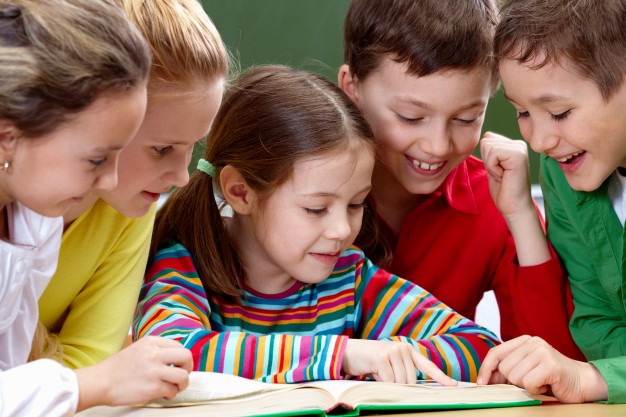Teaching Non-Fiction Reading and Writing
Teaching Non-Fiction Reading and Writing
by Miriam Bissu
Non-fiction reading has great appeal to young children who are curious about the world and are eager to learn about a variety of topics. However, non-fiction reading and writing require a set of skills and a foundation of knowledge that is different from reading fiction. The reader has different goals and must use different strategies. Thematic units in science, health, and social studies can incorporate a set of comprehension and information processing skills that we can begin to teach in early literacy.Non-Fiction Reading
A good way to start children on becoming non-fiction readers is to provide books on topics that interest them. When beginning a science or social studies unit, I suggest finding some big books on the topic and using them for shared reading (See Those First Few Weeks Using Shared Reading). The lesson plans should look something like this:
- Start a KWL chart with your students on the topic. What do I know about the topic? What do I want to know? What did I learn? This chart is developed with the children over the course of the unit.
- Develop a reading and writing vocabulary chart that contains words they will encounter in the texts. For example, if your topic is butterflies, your vocabulary chart might include words such as chrysalis, pupa, and metamorphosis. Write the words on a separate chart and work them into your talk about the topic. This will facilitate decoding and encoding later on.
- Teach visual literacy by spending a good deal of time discussing the illustrations, charts, and graphs that appear on the cover and in the book. These materials have been provided to teach readers about the topic and provide essential information as well as to stimulate interest.
◦Model looking at the illustrations before reading the text.
◦Ask students what the illustrations tell us about the topic.
◦Direct their attention to the use of diagrams, and have them notice that arrows are used to label parts of a picture or model.
◦Direct their attention to the graphs. Ask what information they can get from them.
◦Keep your questions open-ended so that students are processing the information and articulating it on their own. Ask questions like “What can you tell about___ from the graph/diagram, etc.?”
- Keep the learning ongoing. At the end of each shared reading lesson have the children work with you by recording what they have learned about the topic on your KWL chart. Have them use their own words.
- Demonstrate that non-fiction reading is different than reading fiction:
◦Point out that the important thing is the gathering of information and learning about new things.
◦Point out that we spend a good deal of time studying the illustrations, diagrams, charts, and graphs, and less time reading the text.
◦We have to stop and think about what we are reading.
◦We have to be sure we understand what we are reading before we proceed in the book.
◦We have to ask more questions about the text and illustrations.
◦We might have to look in other books for more information or to understand what we are reading.
◦We are learning to read many unfamiliar words.
- Provide enough experience in non-fiction reading strategies by finding other big books on the topic before sending children off to guided reading or independent reading.
- Work on a “What Makes a Good Non-Fiction Reader” chart with students to reinforce the reading strategies you are teaching.
Once you feel your students have had enough exposure to non-fiction, you should have them practice the skills on their own. You will need to assemble sufficient copies of leveled text for your guided reading groups and for independent reading. You will want to be sure that your students are studying the graphics and practicing visual literacy, discussing the information with their peers, and recording–in their own words–the important information they are gathering from their reading. They should also be encouraged to make their own illustrations to support their understandings. Read More!
Strategies for Non-fiction 3-8

Due to the increased focus on non-fiction in our state tests, students are needing increased exposure and practice in reading non-fiction. I am a firm believer in KWL charts, Four-window charts, Venn diagrams, and other graphic organizers to help the students visualize the new information they are acquiring; this will help the students imprint the information in the memory banks for recall and analysis later.
I also believe that we should encourage students to find and read books/magazines/newspapers that interest them, but I also think we should teach them how to chase tangential information threads that will help them acquire new vocabulary and stretch their learning horizons. Otherwise the student may find that the same topic becomes stale after reading about it over and over, much like listening to a favorite song that soon becomes monotonous.